Dragonflies. For many of us the word dragonfly brings up memories of childhood when we perhaps tried to catch them for fun. It must have been a very disappointing experience for most as the dragonfly got away. All this experience would have been largely during the rainy months or somewhere close to a water body.
But, ever wondered why water?
Stay put near any water body at a time of the year when dragonflies are around and you will notice that individuals prefer to return to their selected perch time and again after each sortie. Dragonflies often maintain a territory – an airspace! Any intruder is promptly driven away. Within this space, they will launch short sorties, in a flycatcher- style, to catch small prey. However, when a receptive female wanders in what happens is different story. The male promptly flies up to her and grabs her behind her head with a pair of claspers at the end of his abdomen – all this often happens while airborne! And the female on her part will bend her abdomen to reach close to the male’s thorax to complete the mating process. When in this position they form a heart shape or a wheel as is often referred to.
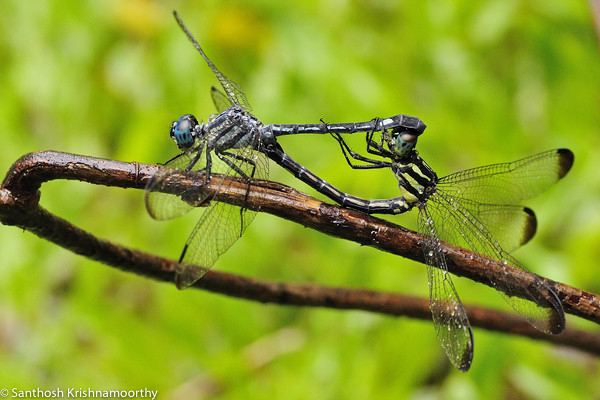
This is also true of the more dainty cousins of the dragonflies – the damselflies.
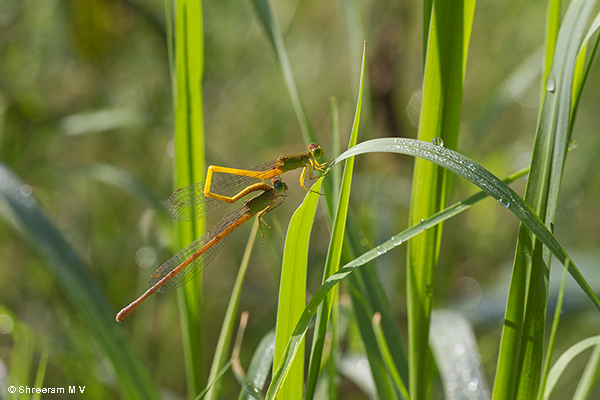
Once the mating is complete, the pair can be seen flying around together at times. Or, while the female is trying to lay eggs, the male may hover in the vicinity. The female may deposit eggs directly in water or may lay the eggs on or in the stems of waterside plants.
The young that emerge from the eggs are called nymphs. And, these are predators in water. The nymphs prey on a variety of aquatic organisms including mosquito larvae and small tadpoles. In fact, a larger part of a dragonfly’s lifecycle is spent underwater and only a small time as an adult flying about.
When the protracted nymphal stage is about to come to an end the nymph crawls out of water and clambers up onto an aquatic plant or a rock. Now, the magic unfolds. The adult dragonfly emerges out and clings on to the nymphal skin.
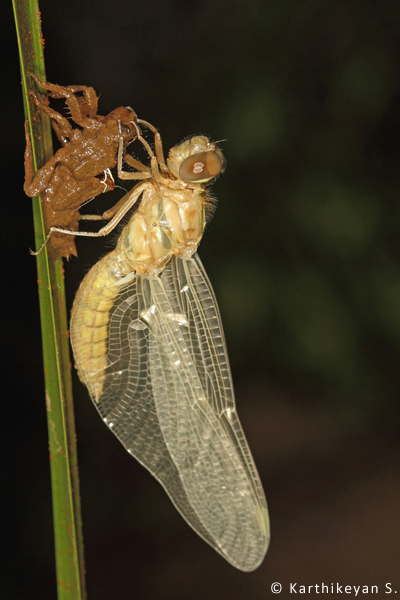
Though one may not get lucky to witness this transformation as it transpires, one may see the spent skin very delicately hanging onto the substrate with little effort.
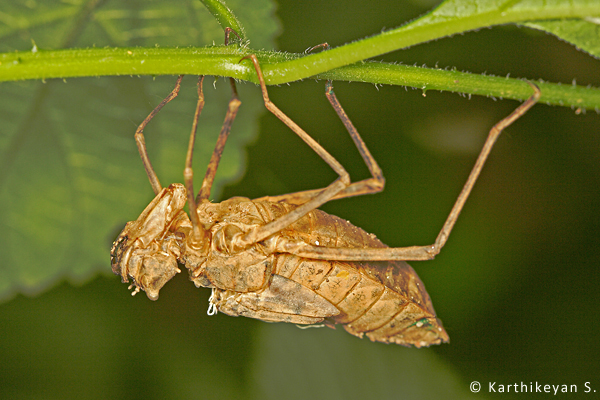
The wings of a dragonfly are kept closed over its back, like a butterfly or a damselfly, until it is dry and ready to get the dragonfly airborne.
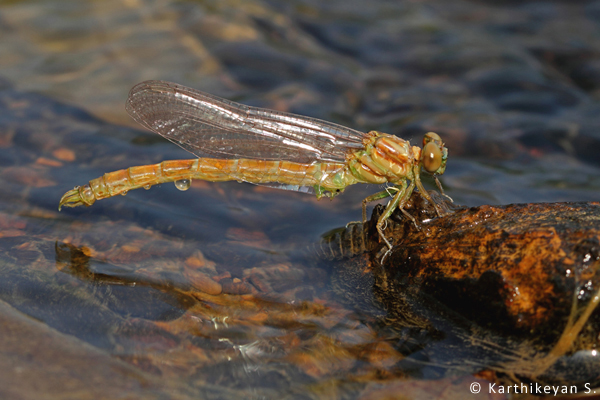
This is probably the only time one can see it opening its wings because from this point on, the dragonfly never closes its wings.
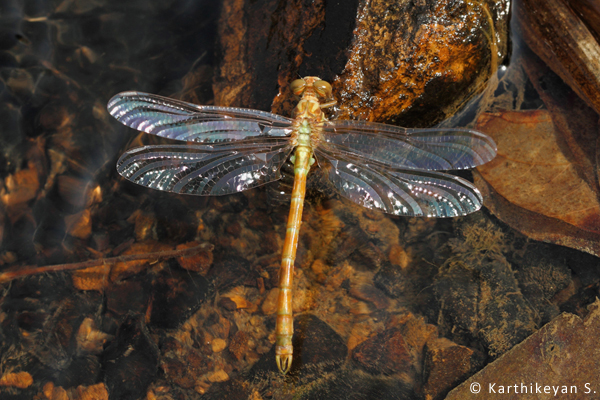
With gossamer-like wings it takes to air and flies with a mastery that only dragonflies are capable of. Not to mention, it also performs its role as a predator preying upon an array of small insects starting from the all too familiar mosquito.
Being part of the web of life, dragonflies too fall prey to a host of organisms. It could be larger predators like birds or …
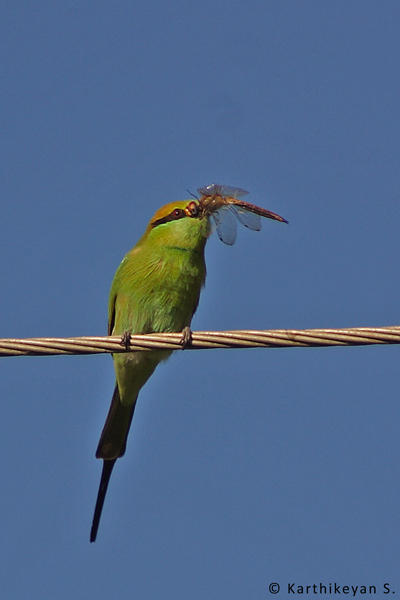
… sometimes other insect predators or…
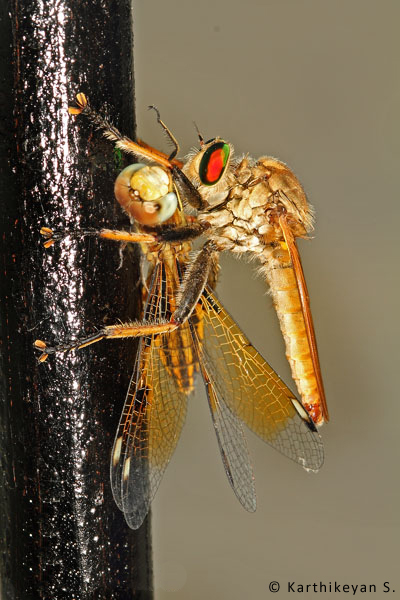
… some may even end up in a watery grave… going back to where they started life from.
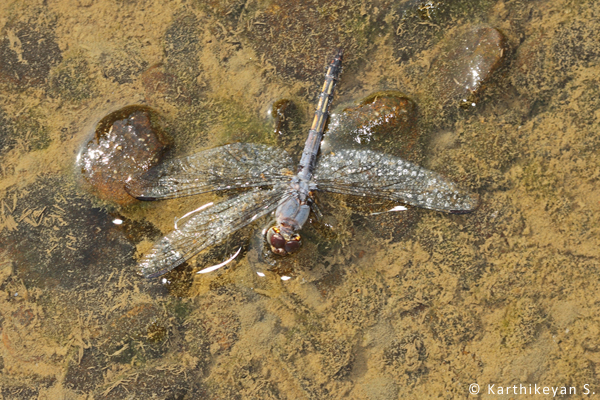
– Thereby, completing a full circle.
Dragonflies have been on Earth for over 300 million years. However, in recent times with the destruction of habitats, both dragonflies and damselflies, are a threatened lot. Besides, they are good indicators of a habitat, particularly the water quality, as they require clean water to breed. Can we observe, understand, and learn a little about these little creatures that add a fresh breath to our life on Earth and do our bit to protect and preserve their environment?
PS : The bird feeding on a dragonfly is a Green Bee-eater and the insect preying on the dragonfly is a robberfly.